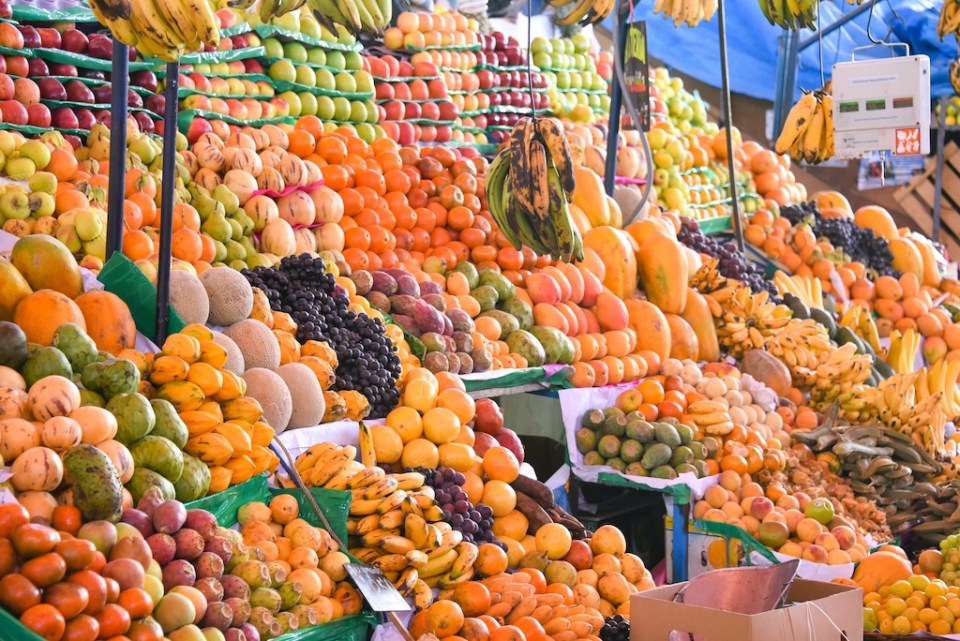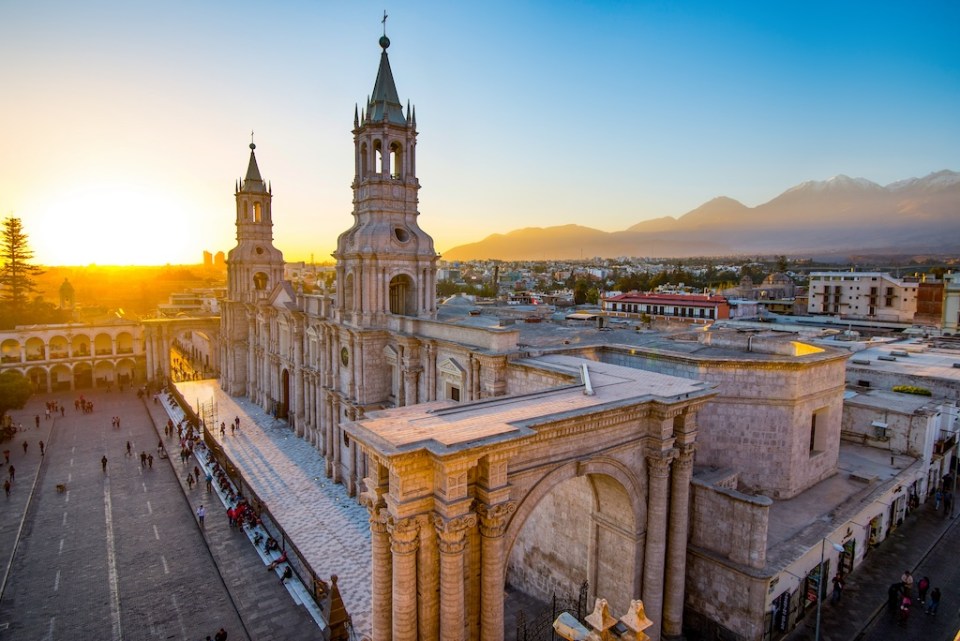Visitors flock to Arequipa, Peru to view buildings made of volcanic white stone, bask in over 300 annual days of sunshine, and explore a majestic volcano that looms in the distance. Arequipa’s elegant city center—which is made of a volcanic rock called sillar—has been a UNESCO World Heritage Site since 2000 due to colonial architects and native masons working together to create some truly stunning, timeless architecture.
The Basilica Cathedral of Arequipa on sunset, Arequipa in Peru
Photo by depositphotos.com
The Basilica Cathedral, located in Arequipa, is one of the city’s most important structures. The cathedral was originally built in 1540, but a series of earthquakes prompted several massive renovations. The Museo de la Catedral de Arequipa allows visitors to tour the cathedral’s stately interior, learn about the cathedral’s 400-year history, and view the art of Peruvian painter Francisco Laso who explored Peru’s indigenous culture in his paintings.
Peru’s cities are celebrated for their lively markets and Arequipa is no exception. The San Camilo Market, situated in Arequipa’s city center, occupies a space designed by the renowned French architect Gustave Eiffel, famously known for the Eiffel Tower. The San Camilo Market sells freshly squeezed juices, fruit, and spicy stuffed peppers. The market features artisanal handmade items such as dolls, ceramic cups, and pouches of dried medicinal herbs.

Fresh fruit and vegetable produce on sale in the central market, Mercado San Camilo
Photo by depositphotos.com
Arequipa is home to one of the most significant archaeological finds in modern history. In 1995, American archaeologist Johan Reinhard and Peruvian mountaineer Miguel Zarate were exploring the inactive Ampato Volcano when they stumbled upon a perfectly preserved frozen mummy of a girl surrounded by precious metals, herbs, and foods such as llama meat.
Upon discovery, researchers learned fascinating details about Juanita’s life and significance. The mummy became known as Juanita the Ice Girl. Juanita was determined to be between 13-15 years of age. She was remarkably healthy and chosen as a sacrifice by the Inca people to Pachamama, or Mother Earth. The Inca believed that a ceremonial sacrifice would calm the angry goddess who was responsible for explosive volcanic eruptions in the region.
Visitors can view the Juanita Mummy at the Andean Sanctuaries Museum at the Catholic…
Click Here to Read the Full Original Article at Unusual Places…
